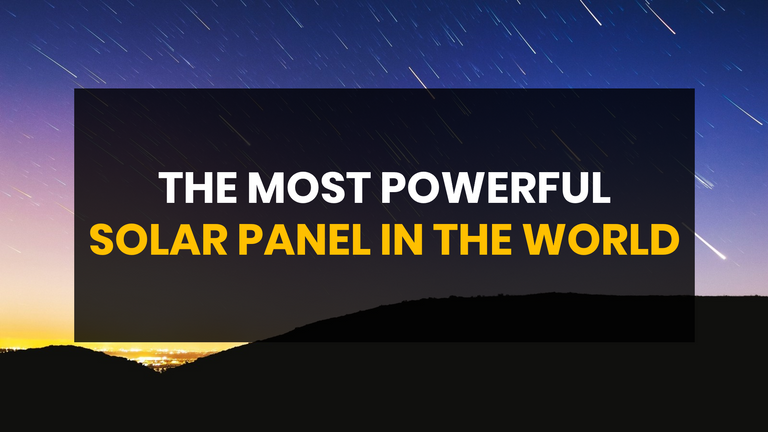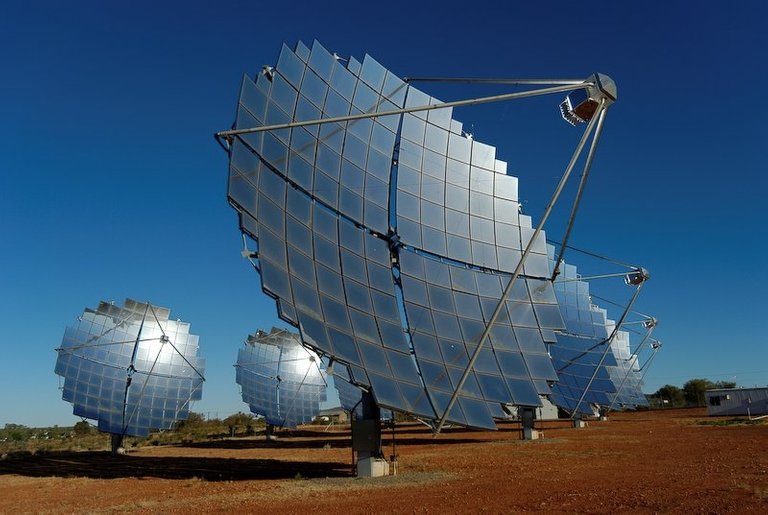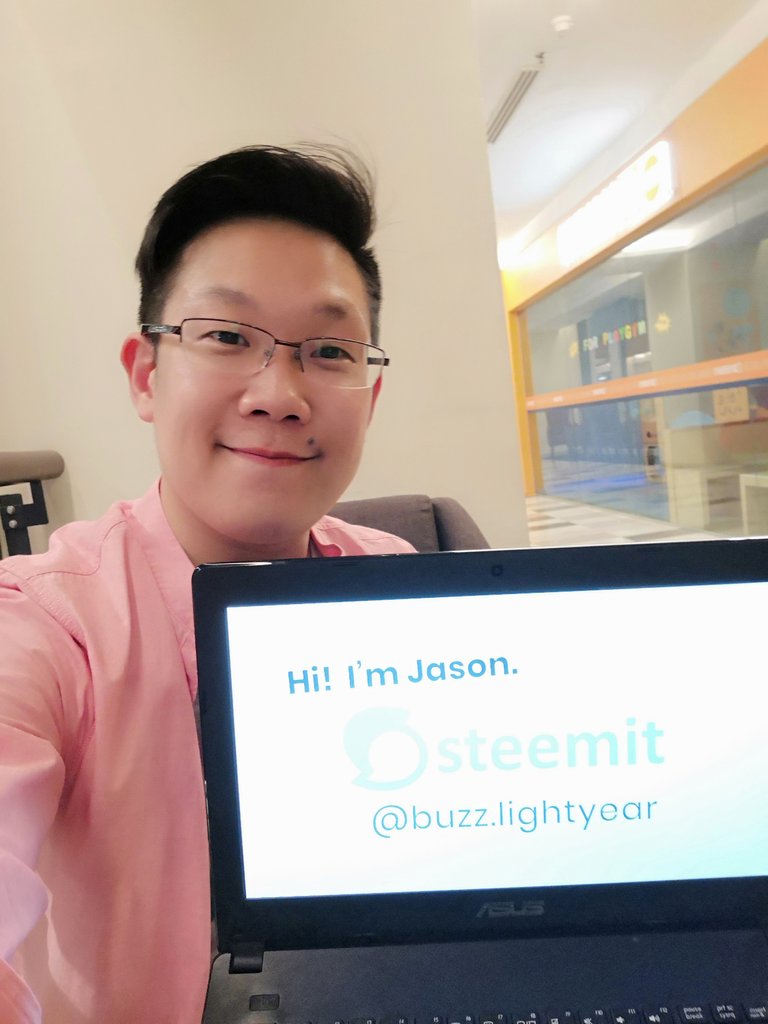
A few days ago, I was having a conversation with a friend who was a retired IT manager.
He said, "Jason, the problem with solar power is that it is not powerful enough."
I asked, "What do you mean?"
He said that he recently rejected a proposal to install a solar power system for a data center because even if they had filled up the entire roof area of the data center with solar panels, it would only generate enough electricity to meet 1/3 of what the data center needed.
I was reminded that this is quite a common rejection to adopt solar.
People have the expectation their rooftop solar should match 100% their energy consumption.
This, however, varies case-by-case depending on your energy consumption pattern and suitable rooftop area available.
A data center is an extreme case because data centers are designed to run computers 24 hours a day and are one of the largest consumers of electricity in the modern city.
But his question is a valid one and it got me thinking...
What is the most powerful solar panel today?
Conservatively, most solar panels that people buy today only have a solar efficiency of 10%.
Solar efficiency represents a solar cell's ability to convert radiation from the sun into usable electricity.
In July 2017, however, scientists have developed a solar cell that is capable of converting direct sunlight to electricity at 44.5% efficiency. It is an impressive solar cell that stacks multiple layers of gallium antimonide substrate (GaSb) based materials into a single cell and results in capturing more parts of the solar spectrum.
This new solar cell also uses concentrator photovoltaic (CPV) panels, which is very very new tech. These panels are equipped with lenses that concentrate sunlight on cells with a microscale dimension of just less than one-millimeter square. Just imagine this...

But designed at a tiny scale.
What this means for us
It is worth looking forward to GaSb technology.
When it does come into commercial availability:
- You can generate 4X the amount of electricity using the same amount of rooftop space.
- You need 4X less panels to meet your energy consumption needs
- It is possible to generate enough electricity to power that data center example above.
The Challenge Ahead
It's not going to come so soon.
Research into GaSb based solar cells existed since 1989. But the innovation these scientists did, has brought the technology to newer heights.
So why is adoption so slow? I reckon in this case, it's because of the dollars and cents.
The highest solar efficiency money can buy is 35% by Spectrolab; subsidiary of Boeing. This might set you back $100,000 per square meter; and you probably need aerospace or military connections to buy one.
Like any new technology, solar has its adoption lifecycle to take its course. But the adoption rate of solar technology is not the same as say, smartphones; even though both technologies have seen their prices drop consistently with Moores Law. The latest smartphones will always be taken up by the market upon each release because the demand dynamics are different.
People want the latest smartphones. But there is zero demand for the latest solar technology.
Final Thoughts
Technology is not a barrier.
Technology adoption is driven by demand.
And demand begins with us.
I believe that a 100% renewable future is possible in this lifetime if we want it. A future where market forces naturally look forward to the latest developments in solar technology as fervently as they do for the latest cars, smartphones, and computer graphic cards.
All made possible by introducing a new energy economy that you & I are going to create together.

Hi, my name is Jason aka @buzz.lightyear. I envision a future where renewable energy is our main source of electricity in this lifetime; reducing the largest contributor of carbon emissions by 90% and bringing our global temperatures back to its natural balance.
I believe that this is no easy task but it is achievable with your support.
I am developing an open blockchain that incentivises both producers and consumers of renewable energy and am looking to collaborate with brilliant minds who share this vision so that we can create a future where it just makes sense to go 100% renewable, visit your local store, buy some latest tech and generate energy for your own use and for others.
Have a question? Please leave a comment and share.
Meteor Shower: VisualHunt.com
Solar Concentrator: Johan Douma on Visual Hunt / CC BY-NC-SA
Green Building Index - get points only lor.
Green Technology Financing Scheme (GTFS) - the government will subsidize 2% from the interest of the loan you use to finance your solar project. Terms and conditions apply.
Say the interest on the loan is 7%, government subsidises 2%, so you pay only 5%.
You've been upvoted by TeamMalaysia community. Here are trending posts by other TeamMalaysia authors at http://steemit.com/trending/teammalaysia
To support the growth of TeamMalaysia Follow our upvotes by using steemauto.com and follow trail of @myach
Vote TeamMalaysia witness bitrocker2020 using this link vote for witness
I fully support the idea of solar technology. I believe it is ignorance that separate us from the others. Our beautiful planet is running out of resources and we have to do something about it. Solar technology is one of the ways.
Thanks @crazymum. We need more people to make positive change happen!
To increase adoption, here is what you need to know first.
China is currently the largest producer of solar electricity in the world. But imagine this, even if China transferred all their solar electricity to Malaysia, it is only enough to meet 0.1% of Malaysia's annual needs. Thus, what China produces is an even smaller fraction to meet the needs of the 1.3 billion population they have.
Hence I believe, it is not incremental change we need.
We need transformation.
It's start with us. For my proof of concept, I hope I can pull enough resources and regulatory support to execute this new vision for say a test community of 50 houses first. Then the next 50.
And on and on it goes.
SEDA is promoting but nobody is taking because net metering is very financially unattractive.
Say your solar power system costs RM 50,000 and you save RM 200 per month because you participated in net metering. That's like paying 20 years of electricity bills in advance.
The net metering program in Malaysia started in 2016 and was open to 100 MW worth of applications, only 8 was taken up.
Seems net metering in California is sorta causing a problem . They have all this excess power during the day time around solar noon. I seen a article that one state was incentive's people getting the tesla power wall for around 1k (still the power companies) they could use it if they needed these reserves . Would be a great idea . You could buy one for your own backup . Problems require solutions that would be a good solution that benefits both you and the juice company.
Thanks @nokiasixteth.
Net metering is causing a problem in California because solar is creating excess power during the day when nobody is at home to use it.
I would need a utility engineer to consult me on this one. In my mind, the excess power would not be wasted because net metering systems are grid connected. The grid is an efficient tool to distribute electricity to whoever needs electricity instantaneously.
One state is incentivizing people to get a TESLA power wall for around US$1,000.
Cool. Which state is this?
Problems require solutions that are win-win.
Agree.
High rise - The rooftop solar might not be enough to be shared with say, 200 tenants in the building for any meaningful difference.
Individual Homes - Yes!
Individual Homes + Neighbourhood - Better!
Imagine you have rooftop solar power system in your home, you will use the electricity you produce first. Then if you need more, you can buy from your neighbours (whoever who has excess).
Only when the neighborhood runs out of solar electricity, you can buy the rest from TNB.
So your first round of electrical consumption is free. Next, you buy from your neighbours same rate as TNB but at least you know you are using clean electricity. Then only when you need, you use TNB electricity.
Currently, there is no system like this. But with everyones support, we can make this happen. I'm looking for platforms to give free talk to raise awareness. I want to fill up my calendar to talk once a week for the next two years. Please let me know if you have any.
This is so brilliant. Absolutely.
Incidentally, I learnt a few things in my last writing assignment with a client - this may not be news to you though. So, IKEA has this thing called IWAY - a whole set of building codes and regulations that covers, safety health and sustainability (eco). Similarly, Malaysian builders are starting to adopt a few green building standards such as the Leadership in Energy and Environmental Design (LEED) for Existing Buildings & Operations (EBOM) and Malaysia’s Green Building Index (GBI). What about finding ways to get these governing bodies to come on board with your initiative - whether at the blockchain level - or through an intermediate so that they can maintain their "non-crypto systems" operations?
Not sure if I made sense there. LOL
I will definitely look out for opportunities for you to talk on this. All the best. I especially love your blockchain idea for renewable energy. I wish that would spur a blockchain movement on recycling and other activities that would reduce our footprints on the global ecosystem.
IWAY
This is news to me. Thank you!
LEEDs, EBOM, GBI are all great initiatives to support the cause.
This vision needs all the support it can get. If you know people from these bodies, I'd love to meet them.
Regulatory support
Regulators uphold the law of the land. Most definitely would need their support.
Thanks @kchitrah.
I'll definitely share all I know should any more come way.
Your success will always be in my thoughts and prayers @buzz.lightyear.
Have a great week ahead.
great article bro
Thanks bro 😉
44% is super duper efficient! I didn't even know we've reached that effeciency in Lab environment already!
Solar grid is really the way to go. The older generation may still have their outdated notion but I believe the younger folks in the future will be more favorable towards this new tech.
nods head in agreement
This post was featured in TeamMalaysia TehTarik Sunday ! Keep up the great work . Here is a small tip!
Teammalaysia'S Daily Picks #4 | @Angeljames, @Ackhoo & @Orangila@myach wrote lately about: Feel free to follow @myach if you like it :)
Hi @buzz.lightyear! You have received 0.1 SBD tip from @myach!No.
If you receive a monthly bill of RM 200, for example, your home consumes about 500 kWh per month.
For this house, it'll probably cost you RM 50,000 to go completely off-grid. In other words, it's like paying 20 years of electricity bills in advance to go off-grid.
I believe the solution is:
(1) Firstly, do not do it alone. We do it together. All of us generate solar electricity. We use the electricity we produce on our own first and because our consumption patterns are all different, our neighbors might have excess we could buy from or vice versa, we have extra we can sell.
(2) Incentivise. When the incentive is strong enough, only then would people go out of their way to overcome the price barrier so that they can maximize their profit.
The effects of climate change are real and our generation will experience them in this lifetime. Matters will be worse for the next generation.
I built my career in renewable energy by chance and now I can't help but feel it is my purpose.
This planet need more good man like urself :)
I'm building a team.
That is the main idea!
If you are producing solar electricity, I should reward you!
If you are consuming solar electricity, I should also reward you!
That is the vision. But this needs to happen first.
Hmmm incentives from governments and big companies. It's true that ROI is one of the bottleneck. But does investing in Solar energy gives slow ROI?
If you are paying RM 200 a month using conventional electricity, the cost of rooftop solar (including materials & labour) that shall generate an equivalent amount of electricity would be about RM 50,000.
So in a way, it's like paying for 250 monthly bills in advance to switch your source of electricity to the sun.
The RM250 monthly bills in advance is for 16 - 17 years... That's a looonnngggg way.. Did I get the calculation correct? 50,000 / 204 (17 years) = RM245
That is about right.
That is why I believe the reason for slow adoption is because there is no strong incentive.
Case in point, Malaysia had a very strong incentive program between 2012 - 2016. In this program, you can sell solar electricity at up to 5X the rate you pay (which is a huge profit!). In 2013, people in-the-know caught on and any new applications available were grabbed within seconds. Adoption was rampant but only as much as the number of applications under this program. The program unfortunately no longer accepts new applications since 2016.
I am sad when they made that announcement. But, that program did leave me a clue.
Hence, I want to create an open public blockchain that incentivizes both production and consumption of solar electricity. I have set a date when my whitepaper must be out.
Meanwhile, I'm doing free talks to raise awareness and interest and I'm actively looking for new audiences and places to speak so that I can fill my calendar and speak once a week for the next 2 years.
Using blockchain technology to incentivize production and consumption of solar electricity? Wow, I can't even imagine how that could happen! It's gonna be something real big and change the entire game!
I'll be waiting for 30th May @buzz.lightyear!
If my company talks about renewable energy or I know any friends looking for speakers about solar energy, I know who to look for now :)
The Pioneer Round. Please come join as a Pioneer.@tifaong One year later, I am making incremental progress to develop this cryptocurrency for renewable energy producers and supporters. We have now entered Phase 1 of the project -
Everybody can earn this cryptocurrency simply by introducing us to people you know who are rooftop solar homeowners.
Also, yes I would love to speak if you can arrange a platform for me. Topic title: How to achieve 100% Renewable Energy for Malaysia by the Year 2068.
Powerledger is a great project.
But what is the point of having a decentralized peer-to-peer energy marketplace when you won't get any adopters onto your platform?
This has to happen first.
I believe incentive is the main key important difference I want to introduce with my open public blockchain.
If you are producing solar electricity, you should be rewarded!
If you are consuming solar electricity, you should also be rewarded!